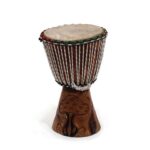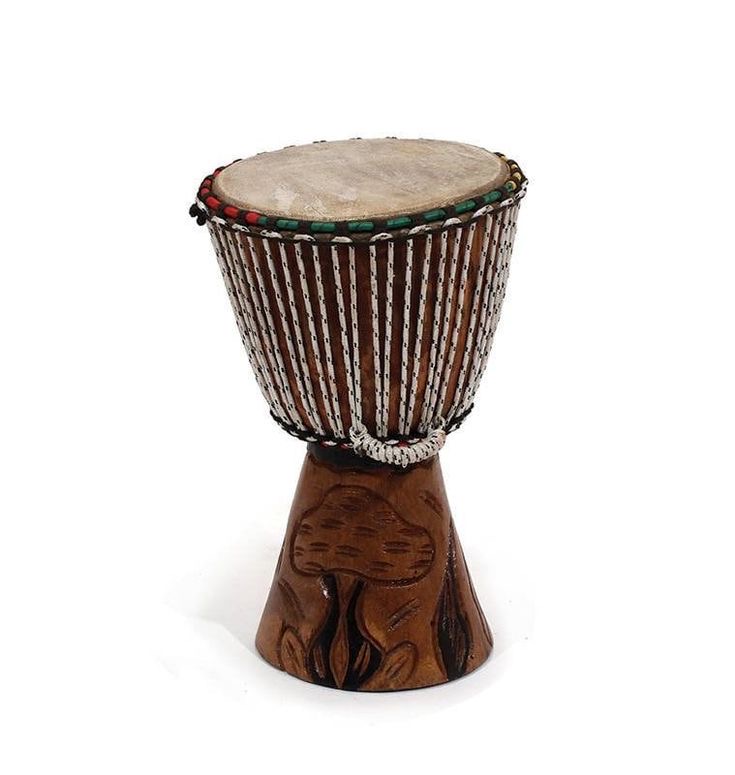The drum is one of the oldest instruments, having come into existence in 5500 B.C. It originated from China and other parts of the world, such as Egypt, Greece, and the Romans, where it was mainly used for cultural gatherings. Drumming is an art as it shows the emotions of entertainment, spiritualism, and communication.
Follow along as we explore Nigerian traditional rhythms.
Table of Contents
History of Drumming in Nigeria
In Nigerian history, different drums have been recorded over the years: the Bembe drum of the Yorubas, the Udu of the Igbos, and the Kalangu of the Hausas, without leaving out the leather skin TomTom used by the Efik/Ibibio people.
Due to the vast tribes and culture of Nigerian citizens, there are records of different drums throughout history, but we will focus on only a few.
Read also: Culture Shock: What it Means and How to Navigate it.
The Yoruba Drums
For centuries, drums in Yoruba land had different purposes, such as speech surrogacy, communication with the dead, and reciting incantations. The drums were also sometimes associated with some Yoruba cults, worshiping some of their gods and deities.
The most common drum in today’s culture is the GanGan, also known as the Talking drum. The talking drum, which originated in the Oyo empire, was historically used for ceremonial activities, including occasionally praising the king and sending messages around the kingdom. The players of the talking drum are called “AYAN.”
Other drums in Yoruba land include the Bata, Omole Ako, Gbedu, Ashiko, etc.
The Igbo Drums
Of all the musical instruments in Igbo land, the Udu drum is one of the most important. It holds a huge cultural heritage as it represents both their music and pottery. The Udu is also called the pot drum. The drumming beats produced are bass.
Water is added to the pot to achieve a high or low sound. Women play this drum, and it is mainly used for cultural rites, weddings, and other events.
Other drums used by the tribe are Nkwa or Egede, Slit drum (Ekwe), Gongs, etc.
The Hausa Drums
The Hausa talking drum is also known as Hausa Kalangu. Like the Yoruba talking drum, it has an hourglass shape and is played with a curved drumming stick. Although there is no distinctive difference between the Kalangu and Gangan, the Kalangu has been in the Hausa tribe for centuries.
The Hausa people were not famous for the drums, but other traditional instruments include the Kora, Kalimba, Kakariki, etc.
Benefits of Drumming in The Ancient Times
- Drumming was used as a form of communication, either with tribes, the gods or deities.
- It was used to go to war.
- It was used during weddings and ceremonies for entertainment.
- It was used to pass information discreetly.
- It was used as a spiritual guide by worshipers of some deities.
- It was used to perform cultural rites like a king’s coronation.
Are you a writer or an aspiring one? Intern at Insight.ng to sharpen and hone your writing skills.
Mystery of Some Drums
Drums in Nigeria have a lot of cultural heritage, and there’s usually a significant story or mystery behind them. Let’s dive into some of them:
-
Talking drum
In Yoruba drumming, it is believed that there is a spirit behind the talking drum that makes it talk, sing, communicate with deities, run errands for people, and vice versa. The drums are used for entertainment purposes and spiritual and esoteric conversations, like the rite of passage, the installation of the king, the morning of a passing etc.
The Ayans are a famous family of drummers, and anyone who has Ayan in his surname today comes from a lineage of talking drummers. The word Ayan is the short form of AYAN-AGALU, which means a spirit who brought the art of drumming into the world. They worship this spirit through the talking drum.
-
Udu drum
The Udu drum, which was explicitly used for women’s rites and ceremonies, was played by only women. Women were the safe-keepers of pottery, so it only seems fair that it was a women’s instrument. It was also concluded that the sound made by the Udu was from their ancestors; due to this, the instrument is considered sacred throughout history till the present.
The Udu is a combination of earth (clay), fire, water, and air, i.e., all four basic elements.
-
Slit drum
The slit drum of the eastern people of Nigeria is said to have three different sizes, but three of them cannot be played together. According to drum experts, it is not really a drum because it has no head.
There are various types of slit drums owned by different nations of the world; what differentiates them is their mode of carving. The slit drum is played by using a stick to strike the open slit.
Read also: Nigerian Parenting: Balancing Tradition and Modernity in Child Rearing.
The Modern Art of Drumming
As much as things evolve, there will still be little traces of history and culture in it. After the colonial era, Nigerian culture slowly began to fade, but there are still things that cannot be forgotten.
In the modern art of drumming, drum sets have been fused with indigenous African or Nigerian instruments, yet in churches and gatherings today, we still hear the sounds of talking drums, bata drums, udu drums, and the rest. The Europeans have also started to acknowledge our musical heritage and have begun to accept it into the musical world.
Read also: The Protective Nature of Traditional Nigerian Hairstyles With Examples.
Conclusion
Nigeria is a country full of cultural heritage that needs to be showcased to the world. Just as we are rich in natural resources and climate, we are also rich in music, as seen in the music industry.
Afro beats are recognized in most parts of the world today, and this all began with our traditional music. Cultural drums are important to our history; we cannot tell our story without mentioning our music and instruments.
Do you like what you’ve just read? Subscribe to our newsletter here to receive notifications of more valuable posts like this.
Edited by Oluwanifemi Akintomide.
About Author

-
Obanya Isioma a writer with an eye for creativity and never fails to express herself in her work. A poet and a content writer, who started writing as a hobby and ended up becoming the passion, which she uses to create exceptional work.
She is always ready to learn and never scared to take up new challenges.
Latest entries
 LifestyleApril 19, 2024The Art of Nigerian Drumming: Exploring Nigerian Traditional Rhythms
LifestyleApril 19, 2024The Art of Nigerian Drumming: Exploring Nigerian Traditional Rhythms



